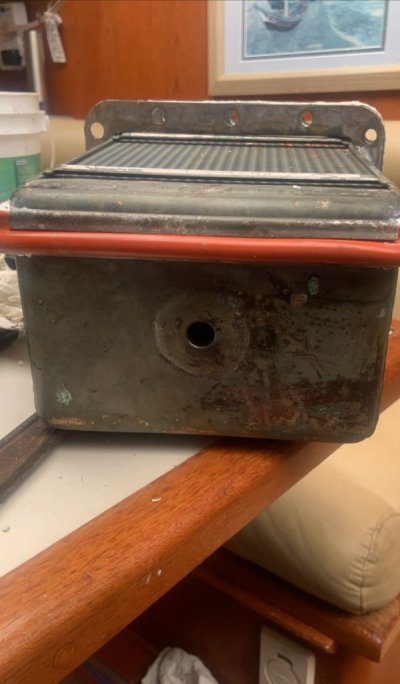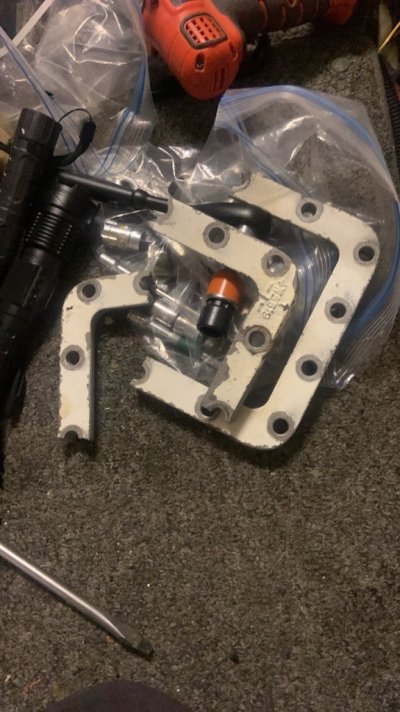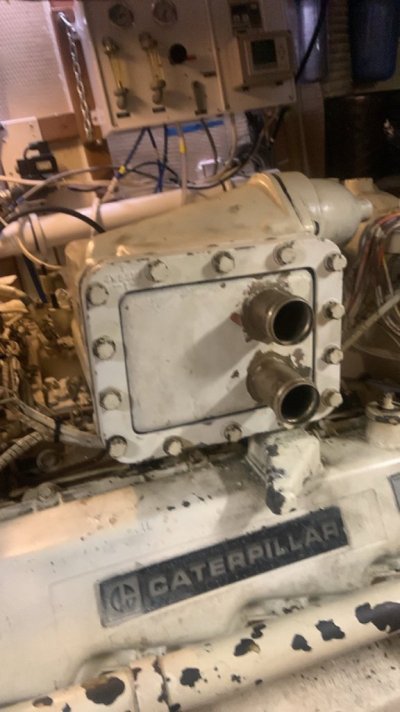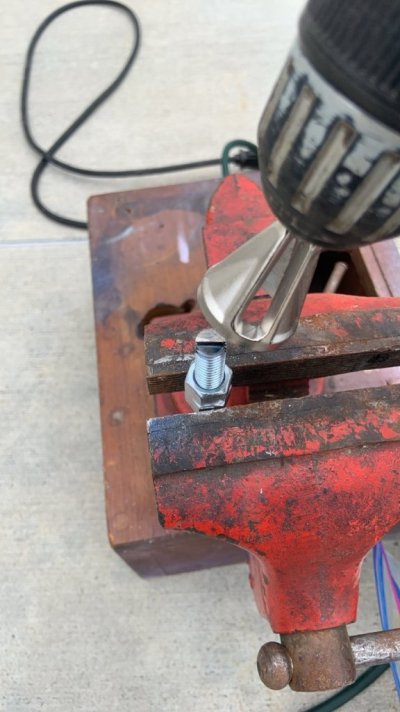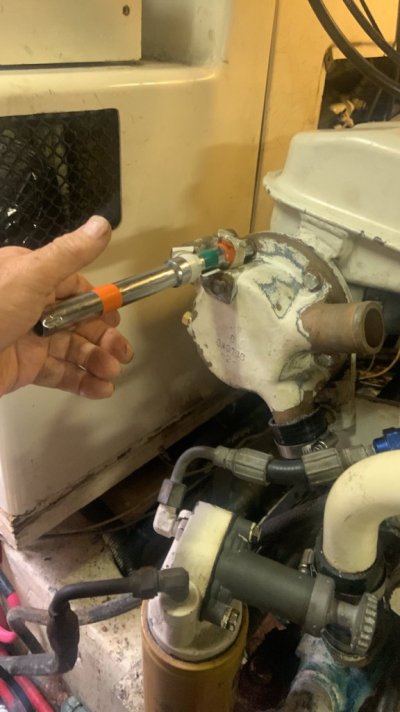RickyD
Guru
- Joined
- May 4, 2018
- Messages
- 802
- Location
- United States
- Vessel Name
- Aquarius
- Vessel Make
- Californian 55 CPMY
Trying to line up gaskets and heat exchanger end caps while working alone can lead to wasted time and fumbling. On top of that my buddy was re-installing his cleaned aftercooler core in his 375hp Cat 3208 and he tried to push it in by tightening the bolts around the frame that holds it in. If you have it, you will know what I mean. This, as it turns out, is a thin piece of pot metal with holes for the bolts that go through the gaskets and the aftercooler flange and into the aftercooler box. It is secured up and down by a roundish rubber gasket and then, when all the way in, there is a protrusion in the back that fits into a depression so that bouncing won't put undue stress on the roundish rubber gasket. I'll try to post some pictures at the end. In trying to force the AC in, he broke the frame we suppose because it was sagging in the back and the protrusion and depression were not aligned. This stupid part cost over $700. So he bought extra bolts for the aftercooler which are the same as the bolts for the heat exchanger end caps, cut off the bolt heads and ground a slot into them so he could use a screwdriver. Then he installed a couple of them, slipped the gaskets and aftercooler over them which them held it all in place while he more carefully installed the frame with some bolts, securing it all and then removed the modified "screws" and finished. That made things much easier. He then used the same technique on the coolant bundle end caps to great success. I thought I would pass that along in case it helps any of you.
Point of reference: my engines are the 425 hp 3208 version and my aftercooler is totally different but the heat exchangers are mostly the same as are the bolts.
Point of reference: my engines are the 425 hp 3208 version and my aftercooler is totally different but the heat exchangers are mostly the same as are the bolts.

